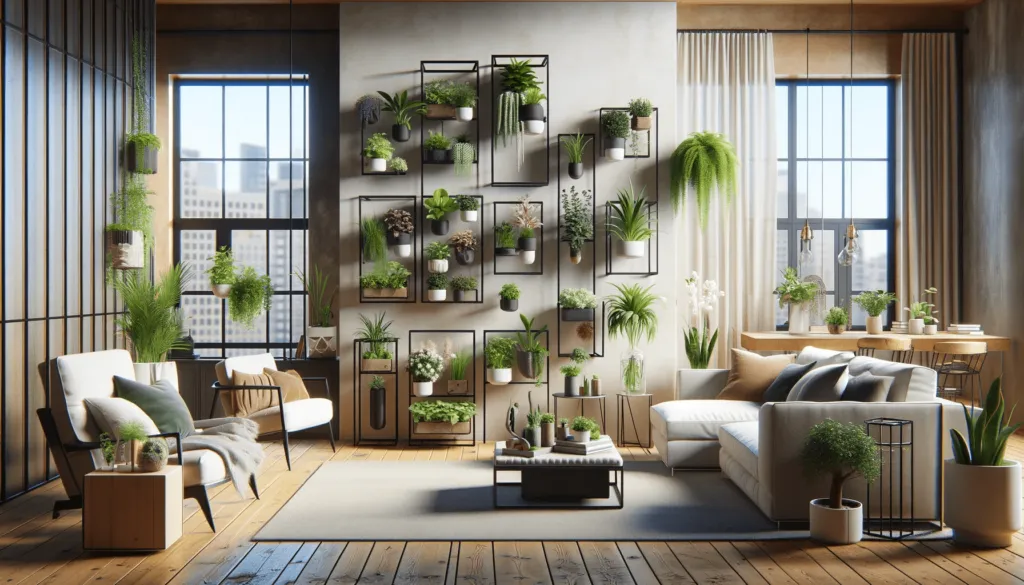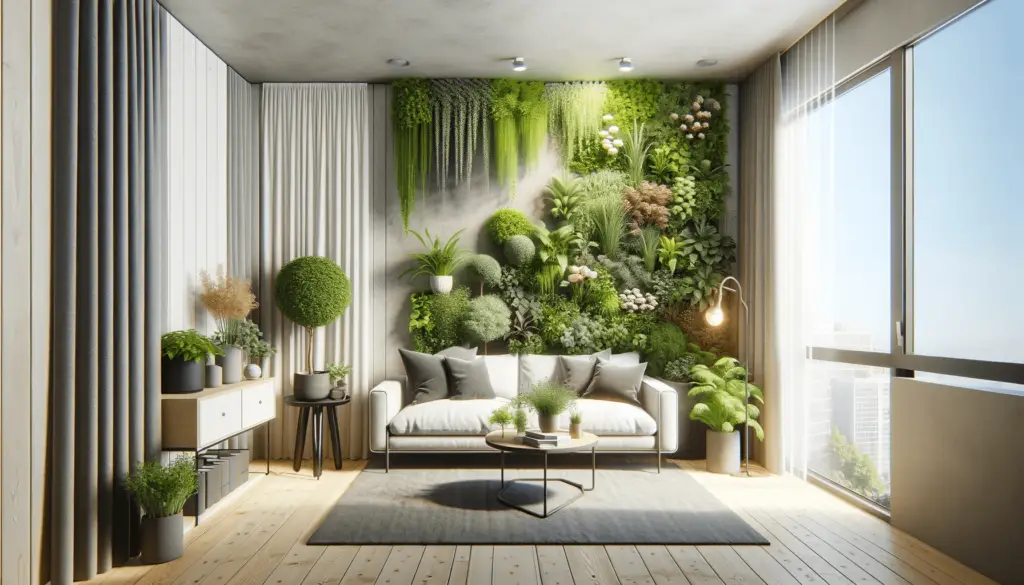Bringing nature indoors to create a lush, peaceful, and stylish living space through indoor garden decor integration has become very popular these days. This will enhance not only aesthetics but mental and physical well-being; you only have to make sure to select the right design, layout, plants, and ornaments.
In this article, we’ll guide you through useful indoor garden design tips to complement your home`s decor, improving air quality and creating a relaxing environment through a well-planned indoor garden, and maximizing space by utilizing vertical garden walls with the right plant sections, indoor water features, and more
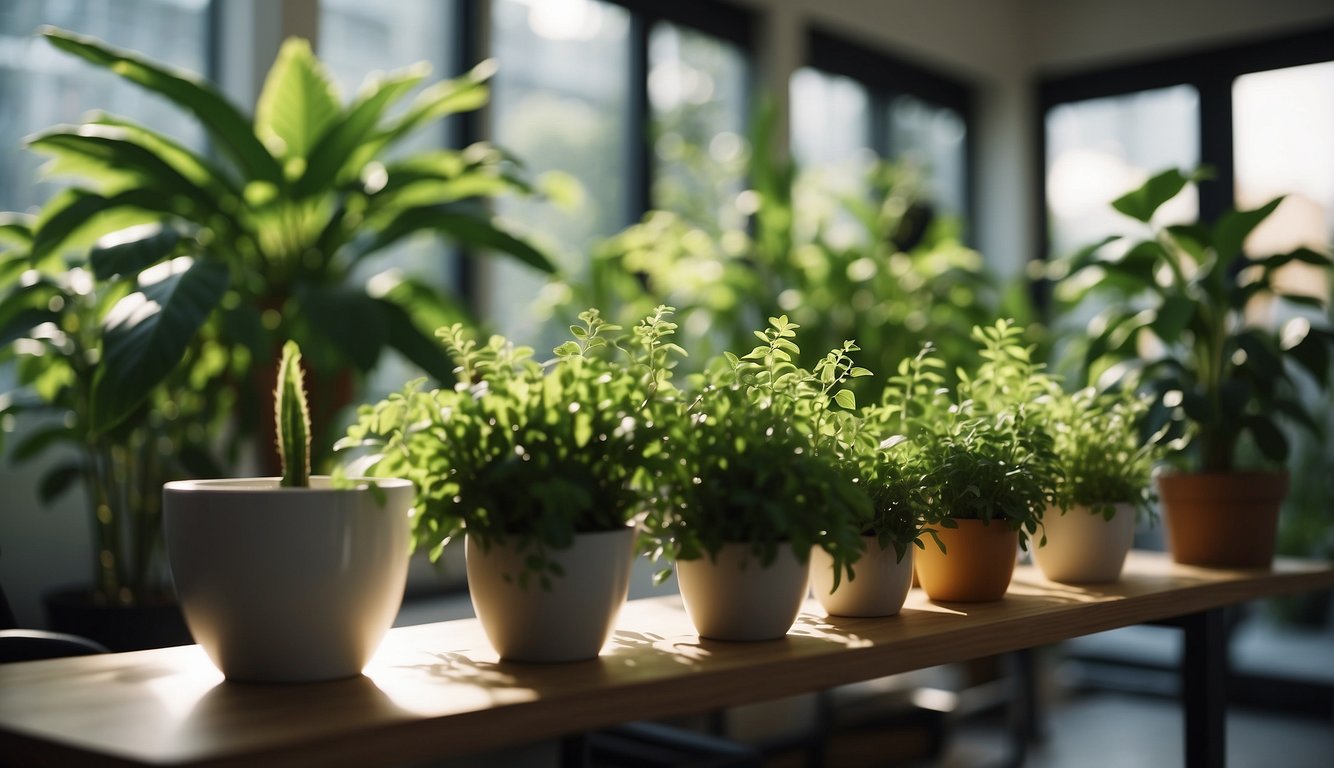
What You Will Learn
- How to integrate Indoor garden decor to enhance aesthetics and well-being
- Best design and layout strategies for a stylish and space-efficient indoor garden
- Choosing the right plants for beauty, air purification, and easy maintenance
- Key elements like lighting, textures, and balance to create harmony in your space
- Creative indoor garden features, including vertical gardens and water elements
- Seasonal care tips to keep your indoor garden thriving year-round
Product Ideas
- >7-Pots Plant Stand: Featuring a ladder design that allows unobstructed sunlight, this plant rack accommodates more than…
- Multifunctional Application: Natural Living Space: Transform any space – living room, bedroom, office, or balcony – into…
- Durable and Sturdy:This plant stand requires no screws, making it perfect for DIY enthusiasts. Utilizing the clever appl…
- 【Plant Stand with Grow Lights】 To promote the healthy growth of indoor plants, we have equipped this indoor plant stand …
- 【8-Tier, 62″ S-Shaped Plant Stand】 This 62″ plant shelf features 8 tiers, 8 pot stands, and 1 hook for hanging potted pl…
- 【Stable and Sturdy】 The frame of this plant stand is made of heavy-duty iron pipe that is 0.85mm thick, ensuring a robus…
- Laid-back boho look of macramé — package includes 3 Pcs macrame plant hangers in different style and size 34″ / 26″ / 2…
- Black selfwatering planters — Plastic Plant Pots designed with absorbent rope and a detectable water reservoir that sto…
- Tassel free macrame plant hangers in black — This Macrame plant hangers with pots included set lacks the tassels common…
“Note: This post contains affiliate links. If you make a purchase through these links, I may earn a small commission at no extra cost to you.”
Table of Contents
Design and Layout
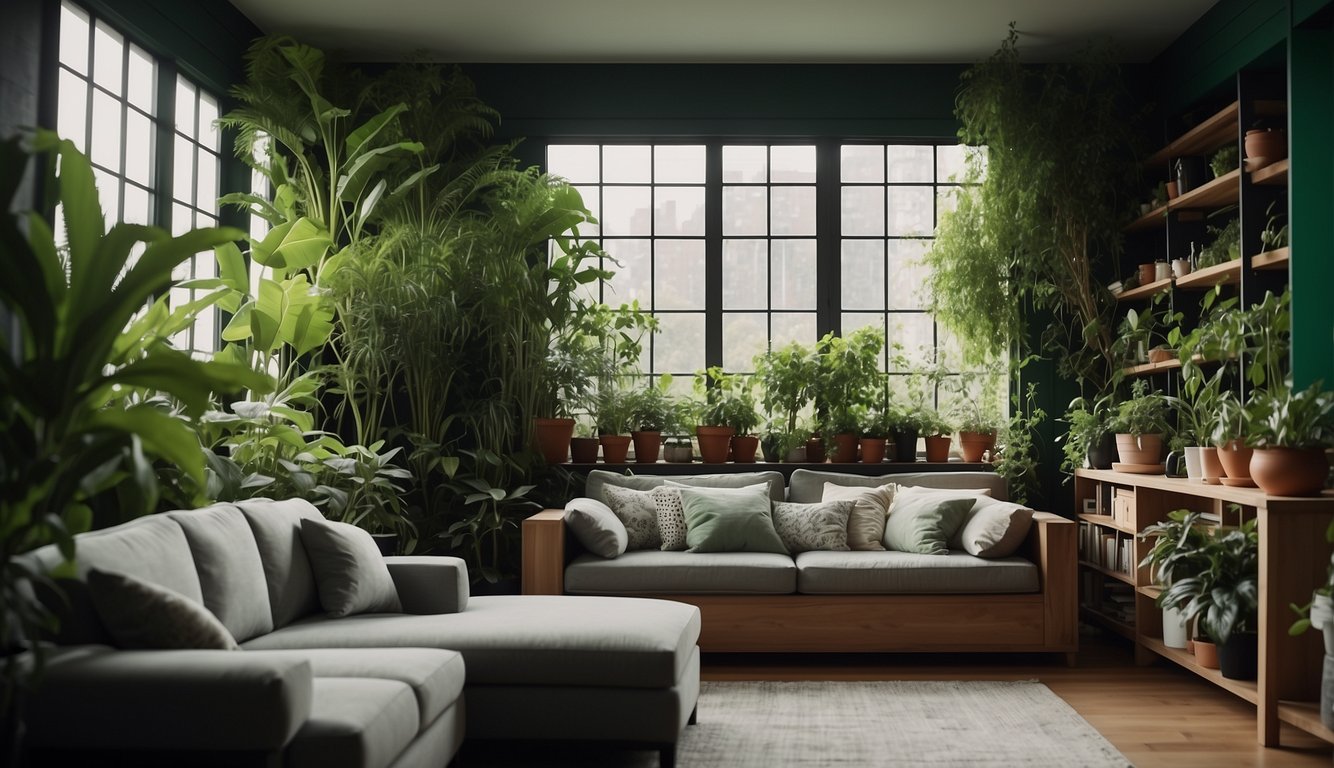
When it comes to indoor garden decor integration, designing and laying out the space is crucial. We want to create a space that is not only visually appealing but also functional and harmonious. Here are some tips to help you design and layout your indoor garden:
Available Space
The first step is to assess the available space. We need to consider the size and shape of the room, as well as the amount of natural light that enters the space. This will help us determine the types of plants that will thrive in the environment and the placement of furniture and decor.
Focal Point
Next, we want to create a focal point in the room. This can be achieved by placing a large plant or a group of plants in a prominent location. We can also use art or decor to draw the eye and create visual interest.
Lighting
Lighting is another important factor to consider. We want to make sure our plants receive enough natural light, but we can also use artificial lighting to highlight certain areas of the room. We can use table lamps, floor lamps, or even string lights to create a cozy and inviting atmosphere.
Color and Textures
Color and textures are also important elements to consider. We can use plants with different colors and textures to create a dynamic and interesting display. We can also use different types of pots and plant stands to add visual interest and texture to the space.
Balance and Harmony
Finally, we want to create a sense of balance and harmony in the room. We can achieve this by placing plants and decor in a way that feels natural and organic. We can also use symmetry and repetition to create a cohesive and harmonious design.
By following these tips, we can create a beautiful and functional indoor garden that integrates seamlessly with our decor.
Plant Selection and Care
When it comes to indoor garden décor integration, choosing the right plants and maintaining them is crucial. Here are some tips and tricks to help you select the right plants and keep them healthy.
Choosing the Right Plants
Selecting the right plants is essential for the success of your indoor garden. Consider the following factors when choosing your plants:
Light Requirements: Different plants have different light requirements. Some plants need bright, direct sunlight, while others thrive in low light conditions. Make sure you choose plants that can thrive in the light conditions of your indoor space.
Humidity Levels: Indoor environments tend to be dry, so choose plants that can tolerate low humidity levels. Alternatively, you can increase the humidity levels in your indoor space by using a humidifier or placing a tray of water near your plants.
Maintenance: Choose plants that are low-maintenance if you don’t have a lot of time to care for them. Some great options include succulents, cacti, snake plants, air plants, and ferns.
Size and Shape: Consider the size and shape of your indoor space when choosing your plants. Tall plants are great for filling up vertical space, while trailing plants are perfect for hanging planters.
Physical and Mental Well-being: Indoor plants have been shown to have numerous physical and mental health benefits. Consider incorporating plants that can help purify the air, reduce stress levels, and improve overall well-being.
Maintenance and Growth
Once you’ve selected your plants, it’s important to maintain them properly to ensure their growth and longevity. Here are some tips for maintaining your indoor plants:
Watering: Different plants have different watering requirements. Some plants need to be watered frequently, while others can go for weeks without water. Make sure you understand the watering needs of your plants and water them accordingly.
Soil: Use high-quality soil that is well-draining to ensure proper growth and development of your plants.
Temperature and Heat: Most indoor plants prefer temperatures between 60-75°F. Avoid placing your plants near drafty windows or heating vents, as this can cause temperature fluctuations that can be harmful to your plants.
Light Requirements: Make sure your plants are getting the right amount of light. If your plants aren’t getting enough light, consider using grow lights to supplement their natural light.
Nutrients: Indoor plants need nutrients to grow and thrive. Fertilize your plants regularly with a balanced fertilizer to ensure they are getting the nutrients they need.
Humidity: As mentioned earlier, indoor environments tend to be dry. Monitor the humidity levels in your indoor space and adjust as necessary to ensure your plants are getting the right amount of moisture.
By following these tips for plant selection and care, you can create a beautiful and thriving indoor garden that enhances your overall décor and improves your physical and mental well-being.
Indoor Garden Features
Indoor gardens are a great way to bring the beauty of nature into your home. Not only do they add a touch of greenery to your decor, but they also promote tranquility and symmetry in your living space. In this section, we will explore the various features that can be incorporated into an indoor garden to create a breathtaking landscape.
Structural Elements
When designing an indoor garden, the structural elements are the foundation on which the rest of the garden is built. These elements include ponds, terrariums, living walls, and greenhouses. Ponds and water features add depth and movement to the garden, while terrariums and living walls provide a unique way to display hanging plants. Greenhouses are perfect for those who want to create a hydroponic garden or grow plants that require a specific environment.
Innovative Gardening
Innovative gardening techniques can take an indoor garden to the next level. Installing shelves near windows or creating a hanging plant display can add dimension and vistas to your garden. Hydroponic gardens offer a unique way to grow plants without soil and can be installed with an irrigation system for ease of use. Fountains and sculptures can be added for a touch of elegance and artistry.
Overall, the cost of installation and maintenance of an indoor garden will vary depending on the features you choose to incorporate. However, with the right combination of structural elements and innovative gardening techniques, an indoor garden can be a stunning addition to any home.
Seasonal Care and Management
We understand that taking care of indoor plants can be a daunting task, especially when it comes to seasonal changes. However, with the right knowledge and care, your indoor garden can thrive all year round.
Winter Months
During the winter months, it’s important to keep in mind that indoor plants need more light and heat to survive. Make sure to place your plants near a window that gets plenty of sunlight, and consider using a grow light if necessary. Keep the temperature of your home consistent, and avoid placing plants near drafty areas.
Trailing Vines
Trailing vines such as Pothos and Philodendron are great indoor plants that require minimal care. During the winter months, make sure to keep the soil moist but not waterlogged, and avoid letting the soil dry out completely. These plants thrive in bright, indirect light, but can also tolerate low light conditions.
Snake Plant
Snake plants are another great option for indoor gardens. They are extremely low maintenance and can survive in a variety of light conditions. During the winter months, make sure to avoid overwatering and keep the soil slightly dry. Snake plants also prefer cooler temperatures, so keep them away from heat sources.
Bamboo
Bamboo is a popular indoor plant that can add a touch of zen to your home. During the winter months, make sure to keep the soil moist but not waterlogged, and avoid letting the soil dry out completely. Bamboo prefers bright, indirect light, but can also tolerate low light conditions.
Herbs
Herbs such as thyme and rosemary are great options for indoor gardens. During the winter months, make sure to keep the soil moist but not waterlogged, and avoid letting the soil dry out completely. These plants prefer bright, indirect light, but can also tolerate low light conditions.
Vegetables
If you’re looking to grow vegetables indoors, consider options such as lettuce, spinach, and kale. These plants require bright, direct light and consistent moisture. During the winter months, make sure to keep the soil moist but not waterlogged, and avoid letting the soil dry out completely.
Overall, taking care of indoor plants during the winter months requires a bit of extra attention and care. However, with the right knowledge and care, your indoor garden can thrive all year round.
Conclusion
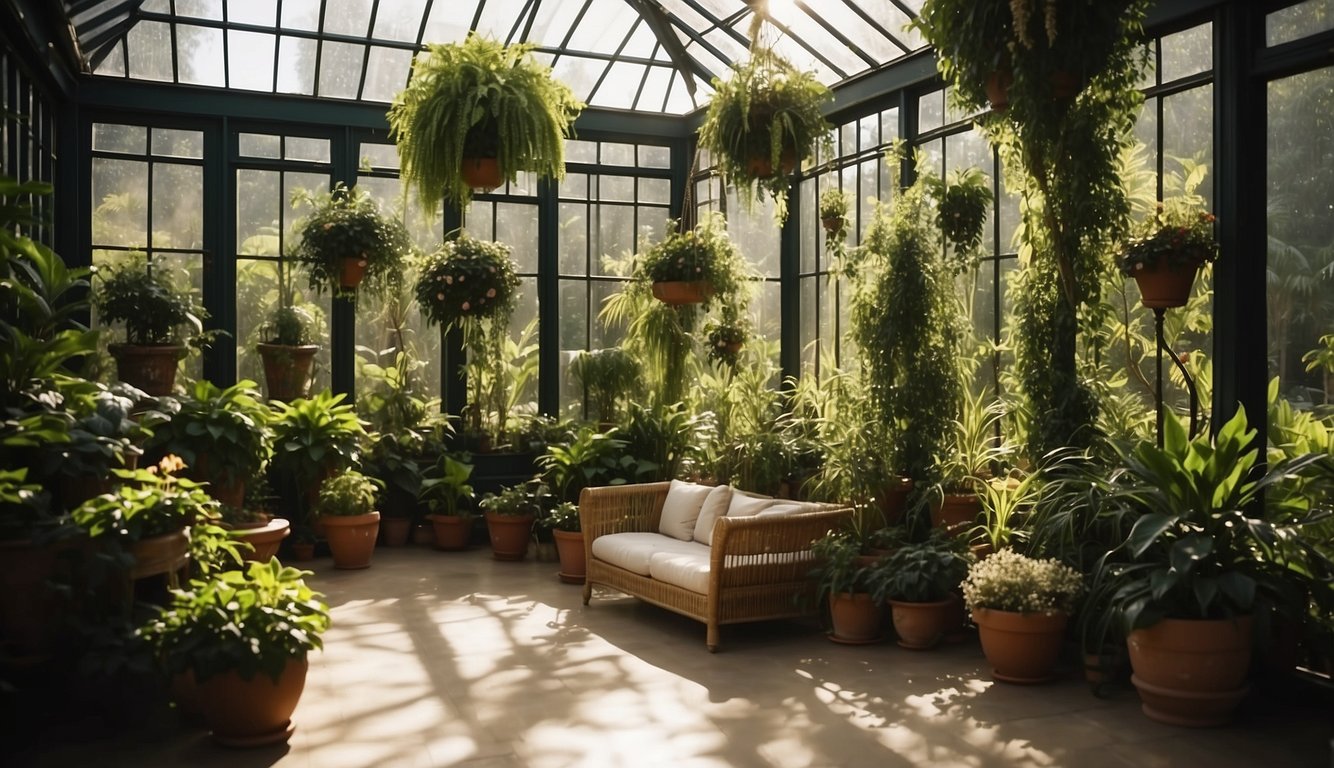
Incorporating indoor gardens into your home decor is a great way to bring the outdoors inside and create a peaceful, calming atmosphere. By integrating fresh herbs into your indoor garden, you not only add a touch of greenery but also have access to fresh ingredients for your cooking needs.
When designing your indoor garden, it’s important to consider the care requirements of the plants you choose. Selecting plants with similar care requirements will make it easier for you to maintain and care for them. Additionally, it’s important to keep in mind any pets you may have and choose plants that are safe for them.
Incorporating an indoor garden into your home decor can be as simple or complex as you want it to be. Whether you choose to create a small herb garden on your kitchen windowsill or a larger garden in a dedicated indoor space, the benefits of indoor gardening are numerous. Not only does it add a touch of nature to your home, but it also has been shown to have positive effects on mental health and well-being.
In conclusion, we highly recommend incorporating indoor gardens into your home decor. With the right plants and care, you can create a beautiful, relaxing space that brings the outdoors inside.
Frequently Asked Questions
What are the essential elements for designing an indoor garden space?
When designing an indoor garden space, it is crucial to consider the essential elements that make up a successful indoor garden. These elements include the choice of plants, lighting, soil, and containers. The plants you choose should be well-suited to the lighting conditions in your indoor space, and the soil should be of high quality to promote healthy growth. Containers should be chosen based on the size of the plant and the overall aesthetic of the space. Additionally, it is important to create a space that is comfortable and inviting, with seating and other decor elements that complement the plants.
How can I integrate plants into my home decor seamlessly?
Integrating plants into your home decor can be a great way to add a touch of nature and beauty to your space. To do so seamlessly, consider the overall aesthetic of your home and choose plants that complement it. For example, if your home has a minimalist decor style, choose plants with clean lines and simple shapes. Additionally, consider the placement of the plants and how they will interact with other decor elements in the space. Finally, choose containers that complement the plants and the overall aesthetic of the space.
What lighting conditions are ideal for an indoor garden?
The ideal lighting conditions for an indoor garden depend on the types of plants you are growing. In general, most indoor plants require bright, indirect light to thrive. However, some plants, such as succulents and cacti, require more direct sunlight. It is important to research the specific lighting requirements of the plants you are growing and to place them in a location that provides the appropriate amount of light.
Which plants are best suited for indoor gardening and aesthetic appeal?
There are many plants that are well-suited for indoor gardening and offer aesthetic appeal. Some popular choices include snake plants, pothos, spider plants, and peace lilies. These plants are relatively easy to care for and can thrive in a variety of lighting conditions. Additionally, they offer a range of colors and textures that can complement any decor style.
How can I maintain a healthy indoor garden in limited space?
Maintaining a healthy indoor garden in limited space can be a challenge, but it is possible with careful planning and attention to detail. To do so, choose plants that are well-suited to the space and consider using vertical gardening techniques to maximize space. Additionally, make sure to provide adequate lighting and water, and to monitor the plants for signs of stress or disease.
What innovative design strategies can enhance the visual impact of an indoor garden?
There are many innovative design strategies that can enhance the visual impact of an indoor garden. Some popular options include using hanging planters, creating terrariums, and incorporating plant shelves or walls. Additionally, consider using plants with unique shapes or colors to create visual interest, and experiment with different container materials and textures to add depth and dimension to the space.




